

Hofje van Guurtje de Waal is a hofje in Haarlem, Netherlands.


Hofje van Guurtje de Waal is a hofje in Haarlem, Netherlands.
It was founded in 1616 by Guerte Jansdochter de Wael, daughter of a rich textile trader, for poor women of the Dutch Reformed faith. She died in 1632. Originally 6 small houses, it was expanded to 8 houses in 1661 when the gateway was built with the family coat of arms. This coat-of-arms is fairly unusual, featuring the Dutch Lion with its head cut off, spouting blood. It has been supposed that this shows anti-orangist political sympathies.
Until 1853 governance by female regents was handed down from mother to daughter. From that time on it was governed by the city council and slowly declined. In 1985 the complex was remodelled into 4 modern homes. Since then it is technically no longer a hofje and is managed by a Haarlem house-rental agency.
Address: Lange Annastraat 40
| Dutch Rijksmonument 19532 |

The Hofje van Bakenes or Bakenesserkamer is a hofje in Haarlem, Netherlands, located between the Bakenessergracht and the Wijde Appelaarsteeg. In the Middle Ages "kamer" or "room" meant house. Usually the houses within a hofje consisted of just one room.
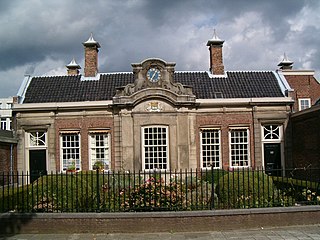
The Hofje van Noblet is a hofje in Haarlem, Netherlands.

The Frans Loenenhofje is a hofje in Haarlem, Netherlands, on the Witte Heren straat.

The Hofje van Staats is a hofje in Haarlem, Netherlands, on the Jansweg 39, close to the Haarlem railway station.

The Hofje van Loo is a hofje on the Barrevoetstraat 7 in Haarlem, Netherlands.
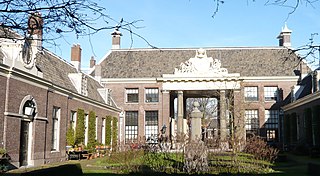
The Teylershofje is a hofje in Haarlem, Netherlands with 24 houses.

Haarlem is one of the cities in the Netherlands that has a number of hofjes. Some of them are still in use with boards of regents. Many of these are members of the Stichting Haarlemse Hofjes. The word 'hofje' just means small garden, because the hofjes are generally small houses grouped around a community kitchen garden with a water pump. Often they were attached to a larger field for bleaching linen or growing orchards, but today those fields have been long used for city expansion and only the central gardens can still be seen.
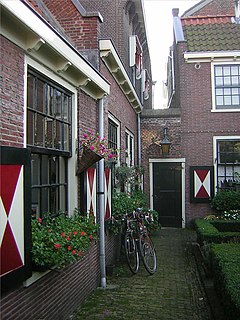
The Bruiningshofje is a hofje in Haarlem, Netherlands.
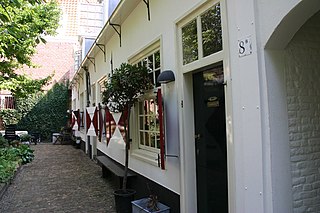
The Brouwershofje is a hofje on the Tuchthuisstraat in Haarlem, Netherlands.

The Hofje van Willem Heythuijsen is a hofje in Haarlem, Netherlands. It was founded in 1650 by the testament of Willem van Heythuysen on the site of his summer residence outside the city walls of Haarlem on land that was considered Heemstede property until it was annexed in 1927. It is one of the few hofjes of Haarlem to be built outside the city walls. It has a 'T' shape and has a small open courtyard and a garden still intact.

The Wijnbergshofje is a hofje in Haarlem, Netherlands, on the Barrevoetstraat.

The Zuiderhofje is a hofje in Haarlem, Netherlands.
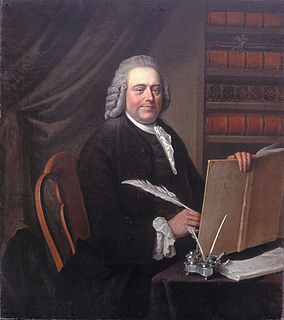
Pieter Teyler van der Hulst was a wealthy Dutch Mennonite merchant and banker, who died childless, leaving a legacy of two million florins to the pursuit of religion, arts and science in his hometown, that led to the formation of Teyler's Museum. This was not the value of his entire estate. He also founded Teylers Hofje in his name, and made important donations to individuals in the Mennonite community.

The Vrouwe- en Antonie Gasthuis is a hofje on the Klein Heiligland 64a in Haarlem, Netherlands. It is open on weekdays from 10-17.00.

Willem van Heythuysen, was a Dutch cloth merchant and hofje founder in Haarlem and Weert. He is best known today for his portraits by Frans Hals, though he is remembered locally for his Hofje van Willem Heythuijsen bordering Haarlemmerhout park, which has been in operation for centuries.

The Hofje van Codde en Beresteyn is a hofje in Haarlem, Netherlands. The current building is from 1968 and is located on the J. Cuyperstraat, which is named for the architect who designed the Cathedral of Saint Bavo next door, Joseph Cuypers. This hofje is the wealthiest hofje foundation in Haarlem with the most modern facilities for its inhabitants. Poor (devote) Catholic women of Haarlem 60 years and older are still welcome to live there for free.

The Coomanshof is a former hofje in Haarlem, Netherlands, on the Witte Heren straat.

Paulus van Beresteyn, was a Dutch lawyer in Haarlem, known best today for his portrait painted by Frans Hals in 1619.

Catharina Both van der Eem is a painting by the Dutch Golden Age painter Frans Hals, painted in 1620 and now in Louvre Museum. It is considered a pendant portrait to the Portrait of Paulus van Beresteyn, in the same museum.

The St. Barbara Gasthuis was a hospital and later a hofje on the Jansstraat in Haarlem, Netherlands. All that remains is a former gateway.